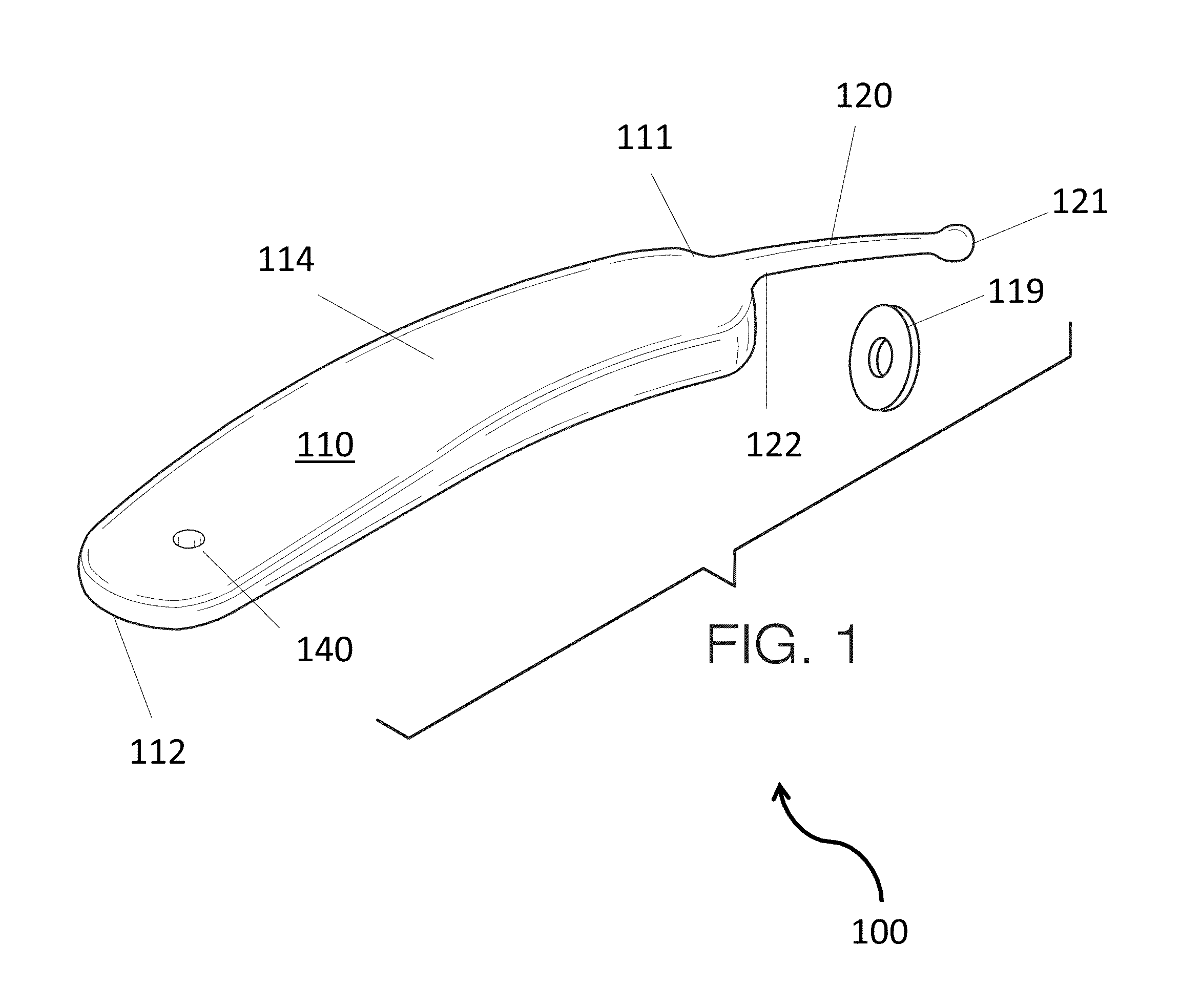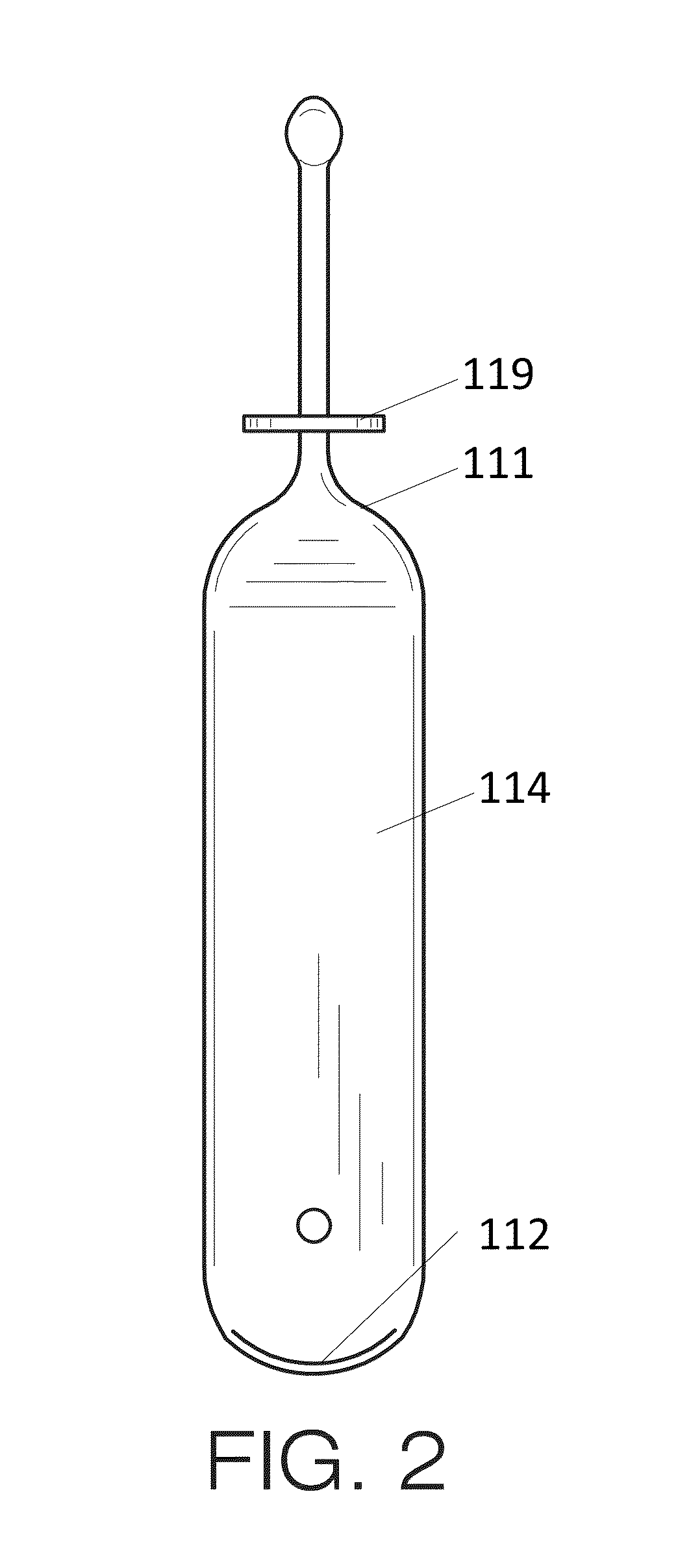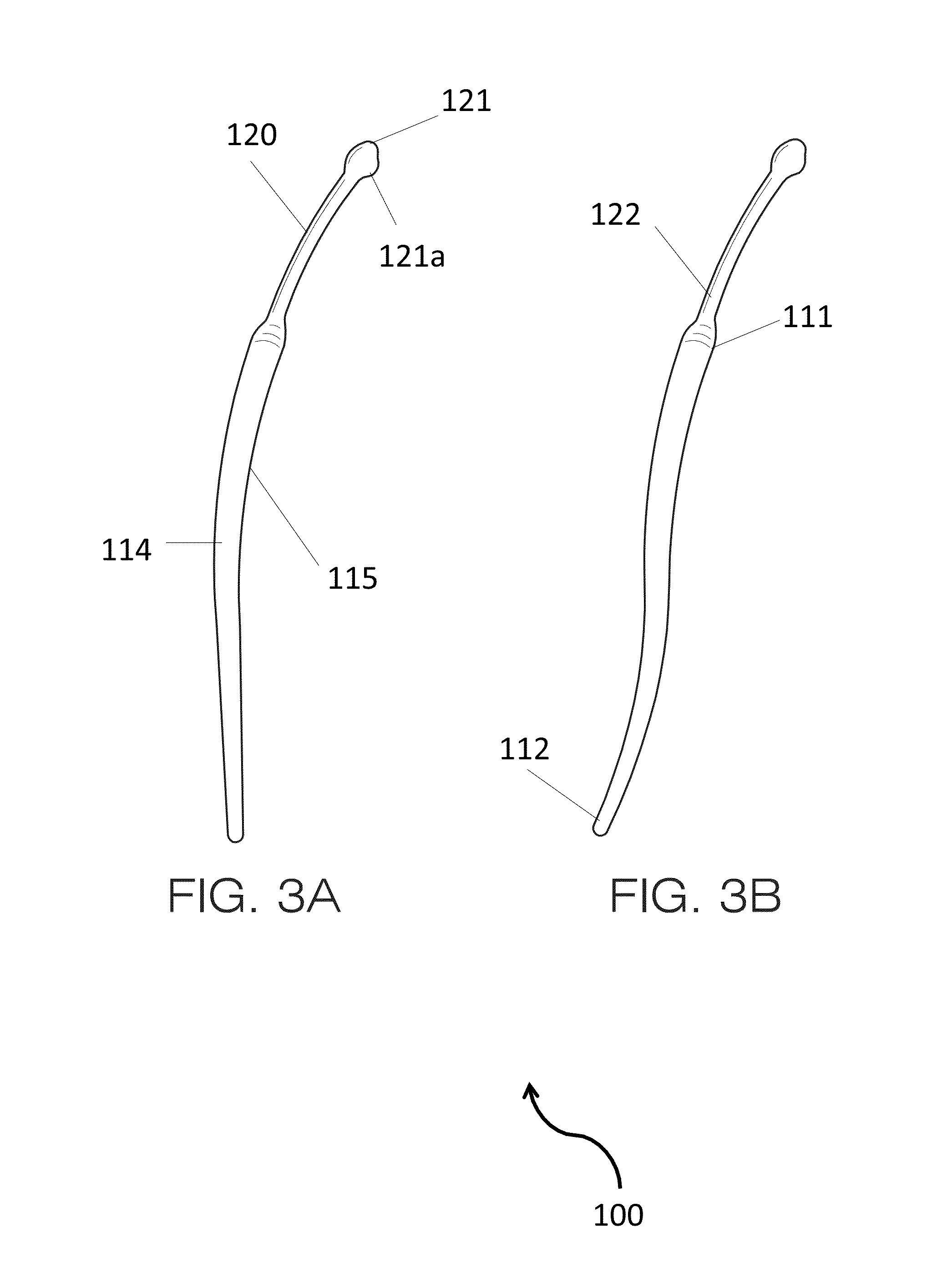Antimicrobial sanitizer systems and methods of killing or inhibiting pathogens
a technology of antimicrobial sanitizer and pathogen killing and inhibiting technology, which is applied in the direction of biocide, surgery, other medical devices, etc., can solve the problem of leaving a trace amount of residu
- Summary
- Abstract
- Description
- Claims
- Application Information
AI Technical Summary
Benefits of technology
Problems solved by technology
Method used
Image
Examples
example 1
Use of Sanitizer System in Hospital Setting
[0155]A Nurse or Doctor carries the presently claimed Sanitizer System in her coat jacket pocket or on a lanyard around her neck. The System is made of a copper alloy recognized by the Environmental Protection Administration (EPA) as having antimicrobial properties in certain applications.
[0156]On the way to a ward or to a patient's room, the Nurse or Doctor rubs her fingers and thumb on the Sanitizer System, which is believed to help kill any pathogens that may be present, thus reducing her chance of transmitting a live pathogen to a patient. The rubbing also lays down a residue of copper, which is believed to help kill any pathogens she may pick up from a patient or from items she touches in the room. She may also swab the tip of the wand in the vestibule of her nostrils and rub the edges of the base portion of the system on her nose and face to further lay down a residue of copper alloy. This may further reduce the chance of her acquirin...
example 2
Use of Sanitizer System while Traveling on Public Commuter Systems
[0161]A passenger carries the Sanitizer System on his person. Just prior to entering a plane, train, or bus, he uses it in a similar manner to the Nurse or Doctor in Example 1, at least on the fingers and thumbs. He uses it again just before and just after touching various surfaces known to harbor potential pathogens, such as airplane tray tables and lavatory fixtures. Assiduous use may reduce the chance not only of acquiring pathogens but also of spreading them.
example 3
Use of Sanitizer System while Shopping
[0162]In the process of shopping, a person comes in contact with a wide array of microbes on everything from items for sale to credit cards. Paper money is especially known to carry many bacteria and viruses. Even if a shopper doesn't use paper money, she touches objects that have been handled by store clerks who, as part of their job, must handle paper money from many other customers, some of whom may be carrying infectious illnesses.
[0163]The shopper may use the system on fingers and thumbs in a manner similar to the Nurse or Doctor in Example 1 before and after shopping and before and after each instance of handling money. Shoppers may be disinclined to use the System of their faces or in their nostrils in public, but it may be less important to do so in a store than in a health care setting, especially if the shopper makes an effort to avoid touching her face until after she returns home and washes her hands thoroughly. Use of the System is ...
PUM
| Property | Measurement | Unit |
|---|---|---|
| Area | aaaaa | aaaaa |
| Antimicrobial properties | aaaaa | aaaaa |
Abstract
Description
Claims
Application Information
 Login to View More
Login to View More - R&D
- Intellectual Property
- Life Sciences
- Materials
- Tech Scout
- Unparalleled Data Quality
- Higher Quality Content
- 60% Fewer Hallucinations
Browse by: Latest US Patents, China's latest patents, Technical Efficacy Thesaurus, Application Domain, Technology Topic, Popular Technical Reports.
© 2025 PatSnap. All rights reserved.Legal|Privacy policy|Modern Slavery Act Transparency Statement|Sitemap|About US| Contact US: help@patsnap.com



